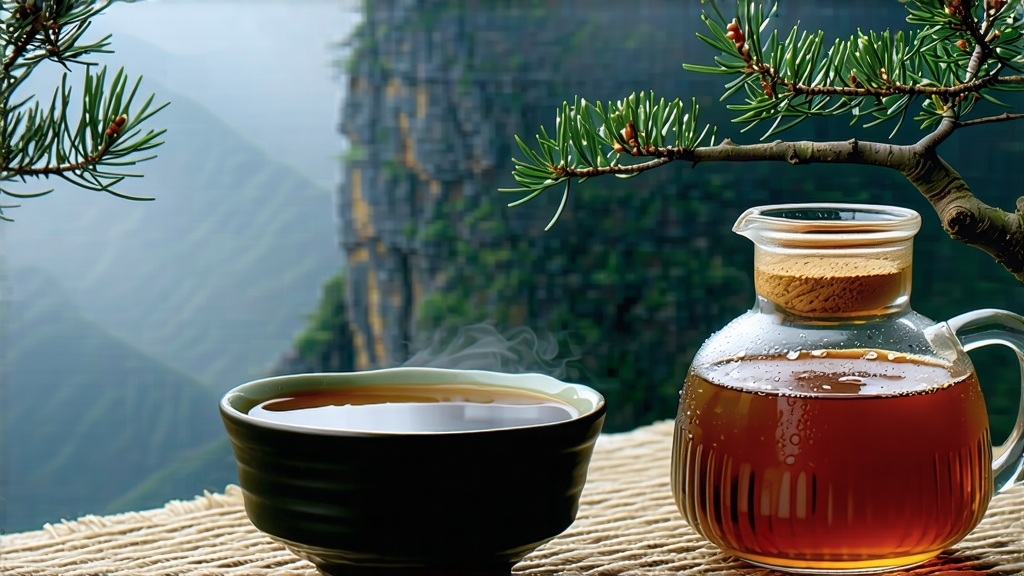
Long before English breakfast blends and afternoon tea trays, a single leaf from the granite gorges of northern Fujian sailed across the South China Sea and rewrote the global palate. That leaf was Lapsang Souchong—today the oldest recorded black tea on earth, yet still the most polarizing. To some it tastes like campfire and leather; to others it recalls dried longan, cacao and the resinous sweetness of a pine forest after rain. Either way, its story is the story of how China taught the world to drink black tea.
History: From Mountain Refuge to London Drawing Rooms
The Wuyi Mountains, a UNESCO double world heritage site, rise in sheer basalt cliffs above the Min River. For centuries Buddhist and Taoist monks cultivated tea on terraces so narrow that mules cannot pass; farmers still carry freshly picked leaves down stone stairs in wicker baskets. Local legend dates Lapsang’s birth to 1567, late in the Ming dynasty, when a passing army requisitioned tea warehouses in the village of Tongmu. To dry the leaf quickly before the soldiers returned, workers spread it over pine fires. The smoke penetrated the cell walls, oxidizing the leaf further and fixing an amber liquor that kept for months. Dutch traders christened it “bohea” (from the Min-dialect name for Wuyi) and by 1604 the first chests reached Amsterdam. Within fifty years London coffeehouses were advertising “souchon, the China drink,” and the British East India Company was placing annual orders measured not in chests but in tons. When Scottish planters smuggled Chinese seeds and craft knowledge to Assam and Ceylon in the 1840s, they were chasing the flavor memory of Lapsang Souchong.
Terroir and Leaf Grade: Why Tongmu Matters
Authentic Lapsang comes only from the original 600-meter-to-1200-meter micro-zone inside the Wuyi nature reserve, an area smaller than Manhattan. Here humid subtropical air collides with cool mountain mist, slowing photosynthesis and concentrating amino acids. The indigenous cultivar is xiao zhong (small-leaf) qunti, a sexually propagated population rather than a cloned bush, so every tree is genetically distinct. Because the region is a national park, no agro-chemicals are permitted; fertility comes from fallen bamboo leaves and wild bird droppings. Leaf grades are still named in the Qing-dialect hierarchy:
– Zheng Shan Xiao Zhong (Original Mountain Small Leaf): the highest grade, picked before Qingming from the first spring bud and two leaves, lightly smoked over resinous Masson pine.
– Wuyi Lapsang: leaf from surrounding villages, machine-rolled, heavier smoke.
– Pekoe Souchong: includes more tips, giving a softer, honeyed cup.
Smoked versions are called yan xiao zhong (smoke small leaf); unsmoked leaves, increasingly fashionable in China, are zheng he xiao zhong and steep into a clear burgundy with notes of lychee and raw cacao.
Craft: The Eight Stages That Trap a Whiff of Pine
- Plucking: dawn harvest, 5 a.m. to 9 a.m., before mountain fog lifts.
- Withering: leaves are laid on bamboo screens inside a qing lou (smoke tower) while pine embers smolder three meters below. Temperature stays below 30 °C for two hours; moisture drops from 75 % to 45 %.
- Rolling: forty minutes of machine rolling bruises cells without breaking them, initiating oxidation.
- Oxidation: the leaf pile is wrapped in wet cloth and rests in a pine-wood box for three hours; polyphenols convert into theaflavins, turning leaf edges copper.
- Smoking I—Hong Bei: baskets are placed on racks directly above a slow pinewood fire for six to eight hours; resin vapor carries guaiacol and syringol, the same phenols that flavor smoked paprika and bacon.
- Firing: a 100 °C charcoal bake for twenty minutes halts oxidation and reduces moisture to 5 %.
- Smoking II—Zheng Yan: finished tea is cold-smoked for an additional two hours to fix aroma.
- Sorting: stems and yellow leaves are blown away with a bamboo winnower; only dark, glossy strips are packed into foil-lined tins.
Chemistry in the Cup
Gas-ch